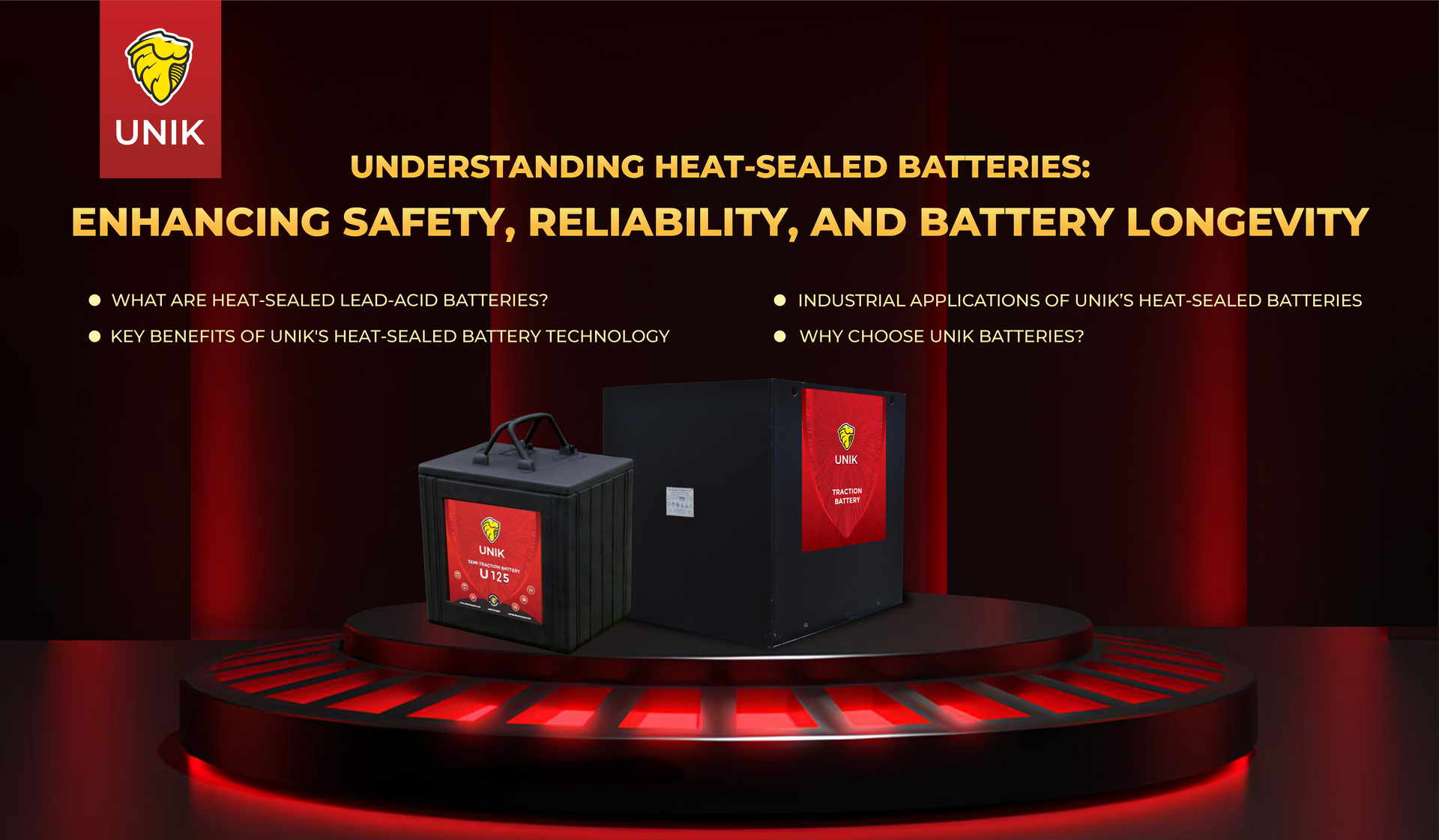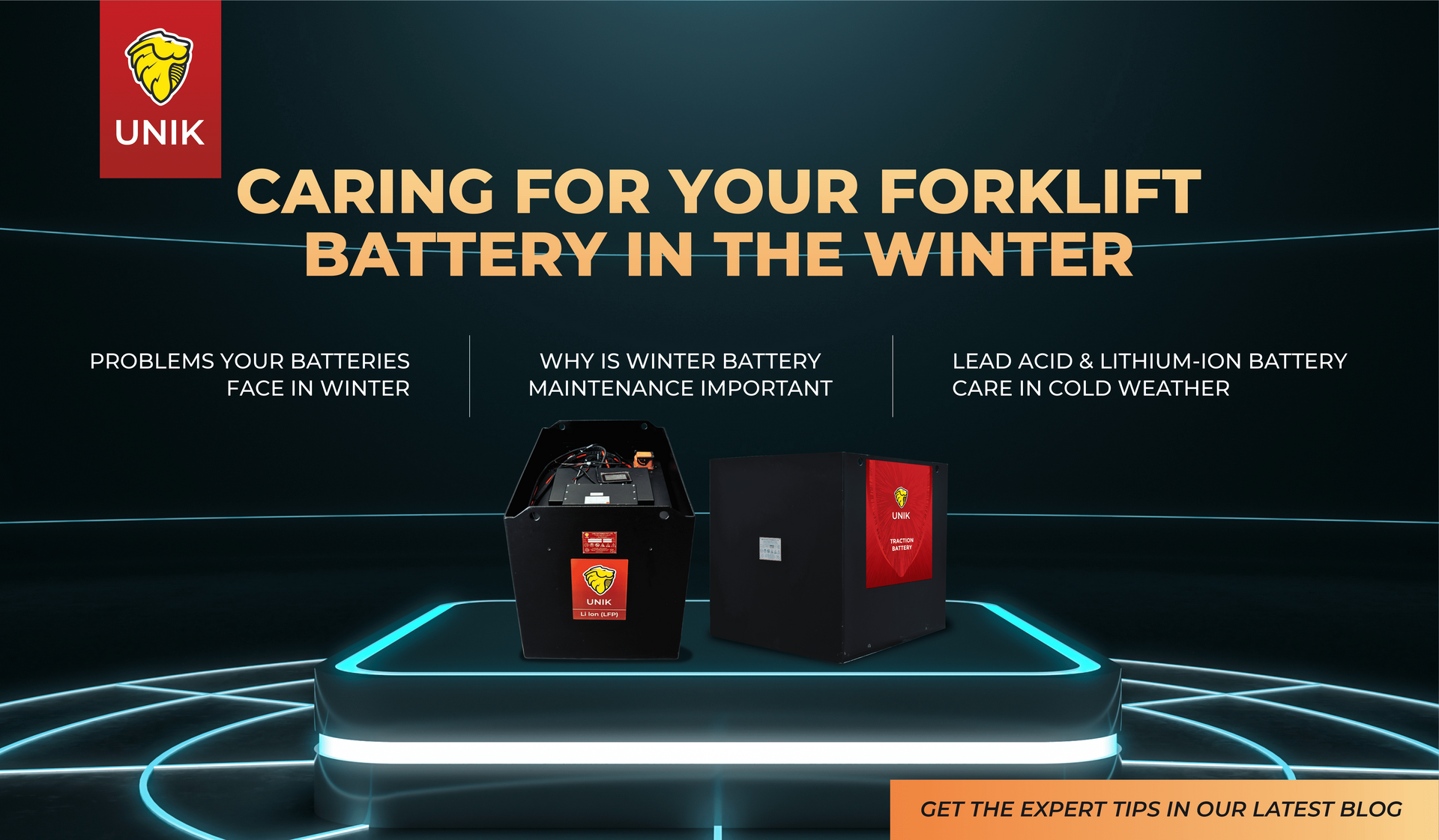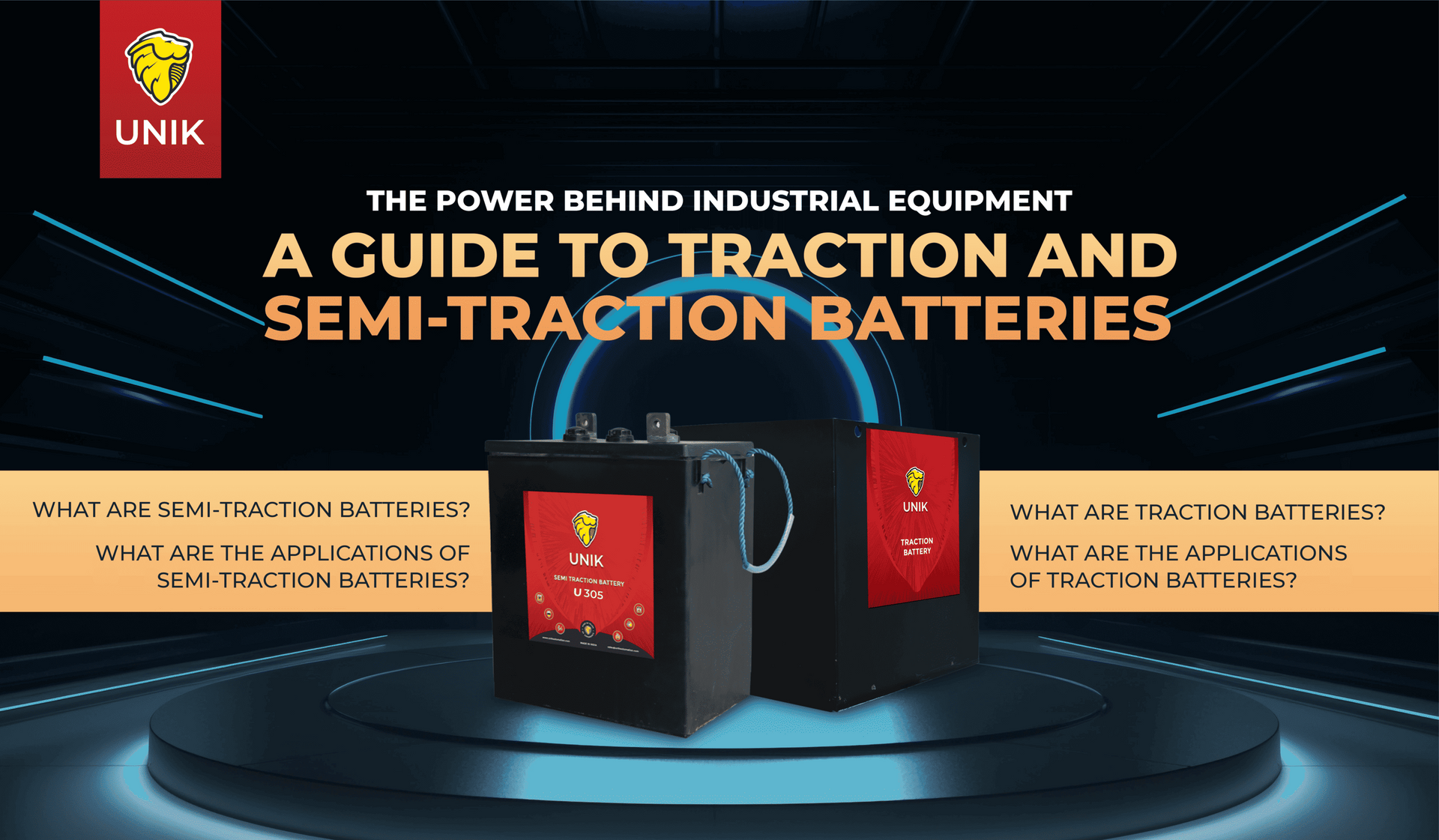Maximising the Battery Lifespan of a Traction Battery in Industrial Settings
What is a Traction Battery?
A traction battery is a deep cycle rechargeable battery designed to power many industrial applications. These batteries can be in the form of Lead Acid Batteries and Lithium-ion Batteries.
Regular water, in contrast, contains a heavy load of impurities and dissolved minerals such as sodium, magnesium, and calcium which are detrimental to the health of batteries.
In which Industries are Traction Batteries Used?
Traction Batteries find applications in a variety of industrial applications. These include material-handling vehicles like forklifts, stackers, platform trucks, cleaning materials, golf carts and EVs.
The longevity of the battery and its suitability in each industrial application depends on the chemical composition of the cell and the industry requirements.
Moreover, every industry application requires its own maintenance practices to ensure the battery’s longevity and reliable electricity supply.
Maintenance neglect and improper usage can degrade the battery lifespan, which increases costs and hampers operational efficiency.
What is the Degradation of a Traction Battery?
The degradation of batteries is a complex and multi-faceted problem. It is categorised by the progressive loss of battery capacity over time, which impacts the battery’s potential to store and deliver energy efficiently.
This loss of capacity only occurs uniformly across different categories of batteries or even within the same battery variant. Factors such as battery maintenance, battery temperature control, and charging play a crucial role in determining the longevity of a battery. Matching the correct battery and capacity to the desired industrial application is vital for efficiency and a prolonged battery lifespan.
What Causes the Battery Lifespan to Degrade?
Deep discharge, incorrect charging parameters and extreme temperatures are the most significant contributors to shorten battery life.
This section of the blog discusses these factors in detail.
Depth of Discharge
This term refers to the amount of battery capacity utilised during each cycle. When batteries are operated within their recommended DoD range, their energy efficiency peaks. It is best to avoid deep discharges in batteries not engineered to support it, as this can considerably shorten battery life.
Charging Parameters
Batteries are manufactured with specific charging requirements for optimum performance. These include parameters such as voltage and current limits that need to be adhered to lead acid batteries and specifically for lithium-ion battery charging best practices.
Temperature Control
Battery temperature control is integral for prolonged usage and efficiency. Extreme hot and cold temperatures negatively impact the battery’s internal functioning and chemistry, which makes the battery inefficient and unreliable.
Ventilation and other temperature monitoring systems go a long way in increasing the battery’s life.
How Can the Battery Lifespan be Extended?
Tackling common causes of battery degradation with battery maintenance best practices enhances battery performance and reduces replacements and costly maintenance endeavours.
Follow this maintenance checklist to get the most out of your lead acid batteries and lithium-ion batteries.
Maintenance and Inspection
Begin with a battery inspection to check for debris, dirt, physical damage and terminal corrosion. Gently clean any dust particles and debris. Next, tighten all connections, check the demineralised water levels in lead acid batteries, and top up, if necessary, as per manufacturer instructions.
Equalisation Charging
Periodic equalisation charging helps balance the charge levels and the overall energy output and capacity. This addresses the issue of cell imbalance and sulfate buildup.
The battery manufacturer usually lists the correct procedure and frequency of equalisation. When in doubt, contact the experts for more information.
Monitor Charging Times
Overcharging is responsible for battery damage and reduced efficiency, which makes monitoring charging times integral. Implementing efficient battery charging controls is critical for maintaining battery longevity.
Storage Practices
Always store batteries in a cool and dry place away from temperature extremes. Sulfate accumulation occurs in batteries that are not completely charged; therefore, always ensure that batteries are charged to their maximum before storing.
Self-discharge in batteries is very common; hence, when batteries need to be stored for extended periods, it is best to frequently charge batteries to their designated capacities for better performance.
In conclusion, vigilant maintenance, including regular inspections and proper practices, is crucial for maximising the lifespan of industrial traction batteries. Addressing factors like discharge depth and charging parameters ensures efficient and reliable performance, optimising operational costs in the long run.




CORPORATE OFFICE:
UNIK Batteries Pvt. Ltd.
J-52/4, Indrayaninagar Road, M.I.D.C, Bhosari, Pune, Maharashtra
411 026, India.
CONTACT US:
International enquiries:
Meghav Bafana
Phone: +44 7756 077320
Email:
meghav@unikbatteries.com
Local & general enquiries:
Shubhangi Daundkar
Phone: +91 98504 13331
Email:
marketing@unikbatteries.com
© 2025 Unik Batteries Pvt. Ltd. All Rights Reserved
Digital Presence Managed By: Knowledge Units


